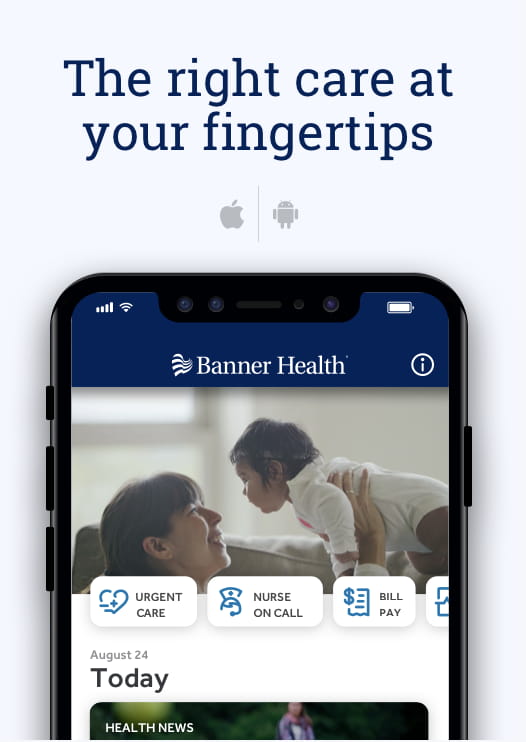Summer is here, and that means more sunny days and fun times outside. But for older adults, hot weather can be dangerous.
Thankfully, you don’t have to risk your health to enjoy summer. There are ways to stay safe and enjoy the warmer weather, no matter your age.
Roshni Kundranda, MD, a geriatric medicine specialist with Banner Health, explains the possible dangers of hot weather and tips for staying safe and healthy during the summer months.
Why hot weather can be bad for older adults
As you age your body doesn’t handle heat as well, which can be dangerous if you aren’t careful. Adults over age 65 have a higher rate of heat-related illness hospitalizations compared to younger adults. The most common heat-related illnesses are heat cramps, heat exhaustion and – most seriously – heat stroke.
“With aging, our bodies produce less sweat, which is the body’s natural way of cooling down,” Dr. Kundranda said. “This reduced sweat response makes it hard to regulate your body temperature in hot weather.”
Older adults with chronic medical conditions, like diabetes, heart disease, dementia and mental health disorders, as well as those taking certain medications, are also at high risk of developing heat-related illnesses. Some seniors have trouble moving around easily, so they might be unable to find a cooler place when it's hot, making them more likely to get sick from the heat.
Essential summer safety tips for seniors
When temperatures climb above 80°F, it’s time to take precautions to avoid illness due to excessive heat. Dr. Kundranda offers these warm-weather tips for older adults:
1. Stay hydrated
Drink plenty of fluids – water is the best option – even if you don’t feel thirsty. Drink fluids before, during and after physical activity. Don’t wait until you are thirsty or dehydrated to drink.
Limit caffeinated or alcoholic drinks and beverages sweetened with large amounts of sugar. Fresh fruits and vegetables, like watermelon, grapes and cucumbers, can also help keep you hydrated.
2. Wear protective clothing
Choose lightweight, loose-fitting clothing in light colors that reflect the sunlight. A wide-brimmed hat and UV-filtered sunglasses can also provide added protection from the sun’s UV rays.
3. Use sunscreen
Apply sunscreen with a high SPF to protect your skin from harmful UV rays. Reapply sunscreen every two hours, especially if sweating or swimming.
4. Stay cool
Spend time in air-conditioned spaces during the hottest parts of the day. Take cool showers or baths or use cool washcloths to cool your body.
If air conditioning is unavailable at home, consider visiting a shopping mall, movie theater, library or community center to cool down. The Low-Income Home Energy Assistance Program (LIHEAP) helps older adults with limited incomes cover the cost of air conditioners and utility bills. Contact LIHEAP at 866-674-6327.
5. Stay indoors during peak hours
Avoid outdoor activities and exercise during the hottest times of the day, typically between 10 a.m. and 4 p.m. Consider getting outside early in the morning or late in the evening to avoid the worst of the heat.
If you prefer indoor activities, consider joining a fitness class at your local gym or virtual workout class in the comfort of your air-conditioned home. Don’t forget to stay hydrated before, during and after your workout.
6. Check your medications
Some medications can make your skin extra sensitive to the sun’s UV light, reduce sweating and increase the risk of heat-related illnesses.
Be extra careful about being out of the sun and heat when taking these drugs so you can reduce your risk. This blog shares a short list of drugs, but check with your health care provider or pharmacist if you are unsure.
7. Stay connected
Don’t be afraid to ask for help, whether a friend, neighbor, family member or caregiver. Reach out to someone you trust if you’re feeling unwell or need help with everyday tasks – especially those that may involve being outside during peak hours.
8. Plan travel wisely
If you plan to travel during the summer months, especially to hot destinations, consider how the weather might affect your health.
- Choose travel times and destinations carefully, opting for cooler climates or scheduling activities during the cooler parts of the day.
- Check if your hotel or accommodations have air conditioning and access to cool, shaded areas.
- Pack plenty of water and snacks to stay hydrated while traveling.
- Keep your medication with you in your carry-on bag. Bring along enough medicine to last your trip. Check out these expert strategies for medications and travel.
- Research medical facilities and emergency services at the destination in case of any heat-related emergencies.
9. Know the signs
It’s important to recognize when hot weather is making you sick and when to get help. Here are possible risks you might face due to too much heat:
- Dehydration: Dehydration occurs when your body loses more fluids than it takes in, leading to symptoms of dry mouth, dark urine, dizziness and confusion.
- Heat cramps: Muscle pains or spasms can occur in your legs, arms and stomach when sweating pulls moisture and salt from your body.
- Heat exhaustion: Symptoms of heat exhaustion include heavy sweating, weakness, muscle cramps, weak pulse, nausea, headache and fainting.
- Heat stroke: Heat stroke is the most serious form of heat-related illness when the body can’t regulate temperature. Warning signs include a high body temperature (104°F or higher), red, hot, dry or moist skin, rapid or strong pulse, headache, nausea, dizziness, confusion and loss of consciousness.
If you are experiencing signs of dehydration or heat cramps, drink plenty of water and, if possible, a sports drink with electrolytes. If you don’t feel better after an hour, have someone call 911.
If you experience heat exhaustion, move to a cool, shady place and drink plenty of cool fluids. Put cool, wet clothes on your body or take a lukewarm bath. Call 911 if you throw up, symptoms get worse or symptoms last longer than an hour.
If you have a heat stroke, call 911 right away. Move to a cool place and help lower your body temperature with cool cloths or a lukewarm bath. Do not drink anything.
Bottom line
Summer is a time for fun in the sun, but it also brings extreme heat that can be a serious problem for older adults. As temperatures soar, taking precautions is important to stay safe and cool.
By following these safety tips, you can maintain good health and well-being during the summer months. Talk to your health care provider or a Banner Health specialist for additional questions or concerns.


